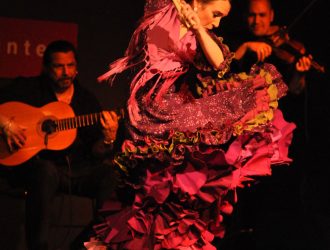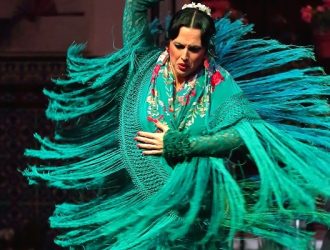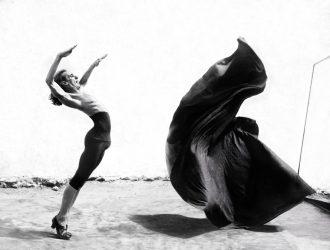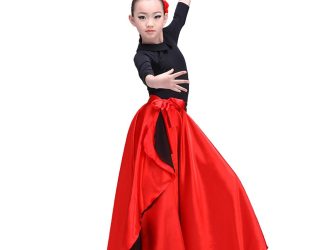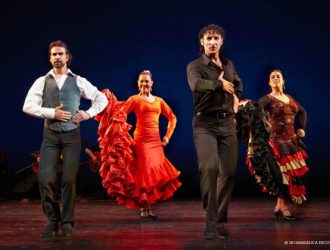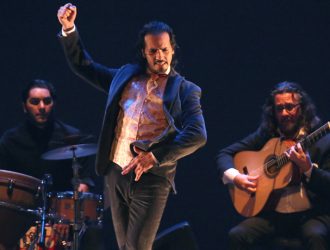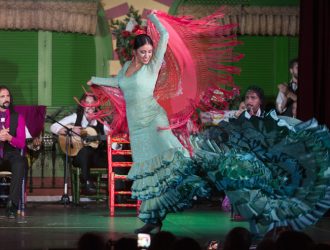Flamenco
Flamenco is a professionalized art-form based on the various folkloric music traditions of southern Spain in the autonomous communities of Andalusia, Extremadura and Murcia. In a wider sense, it refers to musical traditions and more modern musical styles which have themselves deeply influenced by and become blurred with the development of flamenco over the past two centuries.
- Genre:
- Year:
1774 (oldest record)
- Origin:
Spain
- Time signature exaamples:
Gypsy Kings: 18 songs in 2/4, 7 songs in 4/4.
Django Rheinhart (gypsy, not flamenco): 13 songs, all 4/4.
Paco de Lucia: 8 in 3/4, 1 in 4/4, 4 in 3/8, 1 in 6/8.
Bamboleo: 2/4
Bulerias: 3/4
Garrotin: 4/4
Cepa Andaluza: 3/8
Percusion Flamenca: 6/8 - Measures per minute (MPM):
60 beats per minute (may vary)
- Beats per minute (BPM):
300 (may vary)
Overview#
Flamenco has become popular all over the world and is taught in many non-Hispanic countries, especially the United States and Japan. In Japan, there are more flamenco academies than there are in Spain. On November 16, 2010, UNESCO declared flamenco one of the Masterpieces of the Oral and Intangible Heritage of Humanity.
History#
During the 18th century, the Paso Doble was incorporated into comedies. Then later it was adopted as a regulatory step for the Spanish infantry, with a special feature that made the troops take the regular step: 120 steps per minute.
The music was introduced into bullfights during the 19th century. It is now played during the bullfighter’s entrance into the ring (paseo) or during the passes (faena) just before the kill. It corresponds to the Paso Doble dance (traditional and ballroom).
Famous bullfighters have been honored by having Paso Doble tunes named after them. Other tunes have been inspired by patriotic motifs or local characters.
Flamenco Dance (Baile)#
El baile flamenco is known for its emotional intensity, proud carriage, and expressive use of the arms and rhythmic stamping of the feet.
“Flamenco puro” is considered the form of performance flamenco closest to its gitano influences. In this style, the dance is always performed solo, and is improvised rather than choreographed. Some purists frown on castanets.
“Classical flamenco” is the style most frequently performed by Spanish flamenco dance companies, tending to exhibit more clearly the characteristics derived from the Seguidilla, a traditional Spanish dance. It is danced largely in a proud and upright way. For women, the back is often held in a marked back bend. Unlike the more gitano influenced styles, there is little movement of the hips, the body is tightly held and the arms are long, like a ballet dancer. In fact many of the dancers in these companies have trained in ballet as well as flamenco. Flamenco has both influenced and been influenced by ballet, as evidenced by the fusion of the two created by ‘La Argentinita’ in the early part of the twentieth century and later, by Joaquín Cortés.
In the 1950s Jose Greco was one of the most famous male Flamenco dancers, performing on stage worldwide and on television including the Ed Sullivan Show, and reviving the art almost singlehandedly.
Modern flamenco is a highly technical dance style requiring years of study. The emphasis for both male and female performers is on lightning-fast footwork performed with absolute precision. In addition, the dancer may have to dance while using props such as castanets, shawls and fans.
“Flamenco nuevo” is a recent style in flamenco, characterized by pared-down costumes (the men often dance bare-chested, and the women in plain jersey dresses). Props such as castanets, fans and shawls are rarely used. Dances are choreographed and include influences from other dance styles.
The flamenco most foreigners are familiar with is a style that was developed as a spectacle for tourists. To add variety, group dances are included and even solos are more likely to be choreographed. The frilly, voluminous spotted dresses are derived from a style of dress worn for the Sevillanas at the annual Feria in Seville.
In traditional flamenco, young people are not considered to have the emotional maturity to adequately convey the duende (soul) of the genre. Therefore, unlike other dance forms, where dancers turn professional early to take advantage of youth and strength, many flamenco dancers do not hit their peak until their thirties and will continue to perform into their fifties and beyond.
Origin & History#
In the twentieth century, flamenco danced informally at gitano (Roma) celebrations in Spain was considered the most “authentic” form of flamenco. There is less virtuoso technique in gitano flamenco, but the music and steps are fundamentally the same. The arms are noticeably different from classical flamenco, curving around the head and body rather than extending, often with a bent elbow.
The oldest record of flamenco dates to 1774 in the book Las Cartas Marruecas by José Cadalso. Flamenco has been influenced by and associated with the Romani people in Spain; however, its origin and style are uniquely Andalusian.
The origin of flamenco is a subject of disagreement. The Diccionario de la lengua española (Dictionary of the Spanish Language) primarily attributes the creation of the style to the Spanish Romani. Of the hypotheses regarding its origin, the most widespread states that flamenco was developed through the cross-cultural interchange between native Andalusians, Romani, Castilians, Moors and Sephardi Jews that occurred in Andalusia.
The early 20th century poet and dramatist Federico García Lorca wrote that the presence of flamenco in Andalusia significantly predates the arrival of Romani people to the region.
Styles#
Palos (formerly known as cantes) are flamenco styles, classified by criteria such as rhythmic pattern, mode, chord progression, stanzaic form and geographic origin. There are over 50 different palos, some are sung unaccompanied while others have guitar or other accompaniment. Some forms are danced while others are not. Some are reserved for men and others for women while some may be performed by either, though these traditional distinctions are breaking down: the Farruca, for example, once a male dance, is now commonly performed by women too.
There are many ways to categorize Palos but them traditionally fall into three classes: the most serious is known as cante jondo (or cante grande), while lighter, frivolous forms are called cante chico. Forms that do not fit either category are classed as cante intermedio.
These are the best known palos:
- Alegrías
- Bulerías
- Bulerías por soleá (soleá por bulerías)
- Caracoles
- Cartageneras
- Fandango
- Fandango de Huelva
- Fandango Malagueño
- Farruca
- Granaínas
- Guajiras
- Malagueñas
- Martinete
- Mineras
- Peteneras
- Rondeñas
- Saeta
- Seguiriyas
- Soleá
- Tangos
- Tanguillos
- Tarantos
- Tientos
- Villancicos
Technique#
With roots in Indian, Arabic, and Spanish culture, flamenco dance is known for its sweeping arm movements and rhythmic feet stomping. Flamenco dancers spend a great deal of time practicing and perfecting the often difficult dance.
Although there is no single flamenco dance, dancers must follow a strict framework of rhythmic patterns. The steps a dancer performs are dependent on the traditions of the song being played. Perhaps the greatest joy of flamenco dancing is watching the personal expressions and emotions of the dancer, which change many times during a single performance.
Flamenco Basics#
dancer begins to feel the music, the dancer might begin a steady beat of loud hand clapping. Then, as emotion builds, the dancer will begin a passionate dance. The dancing often involves fierce stomping, sometimes made louder with percussion attachments on the shoes, and graceful arm movements. Castanets are sometimes held in the hands for clicking, and folding fans are occasionally used for visual impact.
Photo Gallery#










